Popular on Food52
43 Comments
Smaug
May 3, 2016
I much prefer a batter type recipe, but one way or the other, you really need to use rings, not only for the shape but so that they will split properly.
Martin B.
February 5, 2015
I came for the pickled jam recipe. It's excellent. But - having a reliable muffin recipe I've used for years - did not pay much attention to the main recipe. When I did, I was shocked. Is there some mistake about the amounts of yeast, salt, and sugar? They're way over-the-top. You really do not need these quantities. So much yeast is unnecessary and will affect the taste of the English muffins. I imagine the salt content has been upped to retard the yeast and but it is now extremely high, almost three times what you'd expect to use for this quantity of dough. The sugar is at least double the quantity used in all the other (British) cookbooks I've looked up - four of them. Perhaps the extra sugar is there to mask the saltiness? It's the kind of trap you can get into with yeast. Large amounts of yeast = high salt = high sugar = more yeast because sugar slows fermentation and so it all spirals out of control.
Cut the quantities in half and you will have healthier, cheaper, tastier, more authentic English muffins.
Still love the jam.
Cut the quantities in half and you will have healthier, cheaper, tastier, more authentic English muffins.
Still love the jam.
Smaug
August 7, 2015
The sugar should be mostly consumed by the yeast- English muffins are about the only bread that I use any sugar in, and they don't taste at all sweet.
1234cake
August 30, 2013
Well, I really wish I would have read all of the comments on the Small Batch post for this recipe before I got started. I also took the time to convert the dry ingredients to weights, and found the dough to be woefully wet. I added in a good bit more flour and the dough came together ok--though it seems stickier than it should be. I have it resting in the fridge now, and we'll see if it is workable to shape the muffins though I have my doubts. I really think the measurements for this recipe should be given a retest.
Smaug
August 7, 2015
The dough should be very wet, in fact many people prefer to make muffins from a batter.
beejay45
September 17, 2015
Maybe this is why you can make them without using the rings??? A really wet dough is what gives you the big bubble inside, too, like it does in ciabatta.
Emm
July 24, 2013
Please clarify amount of yeast. 2 1/3 tablespoons is more than 6 teaspoons yet it states less than 2 pkts of yeast. A packet is 2 1/4 teaspoons. Doesn't make sense.
AntoniaJames
July 24, 2013
There seems to be an error in the ingredient list. The parenthetical says a little under two packets, but if a packet is 2.25 teaspoons, by my calculations, it should say "(a little less than the contents of three 1/4 ounce packets)" not "two 1/4 ounce packets". I haven't made these yet, but I plan to, soon. ;o)
Emm
July 24, 2013
Thanks for confirming the error Antonia, I thought I wasn't reading correctly. I'm going ahead with the recipe with 1 pkt of yeast.
breadwhisperer
July 24, 2013
That confused me too, but since I had a one pound bag of yeast instead of packets, I chose to ignore it! 2 TBS + 1 tsp instant yeast worked beautifully. Emm, not sure if your comment above is a typo - but as Antonia points out, you would need 3 packets, not one :)
AntoniaJames
July 24, 2013
Actually, Emm, it seems that to get the two tablespoons of yeast, you'll need three packets, if each has 2 1/4 teaspoons, and the recipe requires 7 teaspoons. If it were me, I'd just dump all three packets in, because that would get to me within 1/4 teaspoon of the 2 1/3 tablespoons called for and that's close enough for me. ;o)
Emm
July 25, 2013
Not a typo breadwhisperer, I'm going with 1 pkt of yeast. Generally speaking, a pkt of yeast will rise 3 cups of flour. For my taste, I think the yeast stated in the recipe is too much, too "yeasty" a flavor. I do have the dough doing a slow rise in the fridge until tomorrow since I ran out of time. I'll report back with my results. Thanks for all the input!
JazzDragon
July 23, 2013
I think I have access to 2 cast iron pans but I'm wondering, this has to be done in them right? So I have to raise and lower my oven temp for 4 of them, then lower oven temp and start over if I wanted to make them all in one batch?
alyssa
July 23, 2013
Hi, Great recipe by the way! but how long will these stay in the freezer because i would prefer to make them and just take them out and cook when needed which might not be within 3 days?
Allison A.
July 14, 2013
Great recipe for a novice English Muffin baker! The only hiccup I found was that the dough was still too wet after adding the required 4 cups of flour, so as breadwhisperer did, I added flour slowly until it felt right! Great recipe and will definitely do this again!
Jennifer A.
July 4, 2013
So much fun, and so much easier than I could have imagined. I used the bread whisperer's weight measurements and they turned out perfectly. Thanks for posting - the photos really helped.
breadwhisperer
June 28, 2013
I made 20 muffins from this recipe - about 60 g each, and ended up baking them over a period of 3 days. (It was an English Muffin "Vertical Tasting.") They were all good, but I most liked the muffins that were baked after a 24 hour rest in the fridge.
Chris C.
June 25, 2013
Thanks, Breadwhisperer, for taking the time to record the weights! That does seem like a crazy amount of yeast. I'm going to give it a try.
breadwhisperer
June 25, 2013
Just made these and - WOW!!! I followed the recipe exactly (even though I was worried that the large quantities of yeast and salt were typos.) They look exactly like the pictures above, and they taste heavenly. I prefer to weigh ingredients, so I recorded the equivalents for next time. If anyone is curious, here is what I used:
Water 56g
Buttermilk 407g
Sugar 50g
Butter 70g
Flour 620g (I started with 480g of flour, and kept adding until the dough felt right. This corresponds to a hydration of 75%.)
The only thing I will do differently next time is use a smaller burner. After 4 minutes the first side was a little too brown.
The muffins are barely sweet, perfectly salty, and taste of a hint of vanilla (even though there is none!) Thank you Christina for sharing this beautiful recipe!
Water 56g
Buttermilk 407g
Sugar 50g
Butter 70g
Flour 620g (I started with 480g of flour, and kept adding until the dough felt right. This corresponds to a hydration of 75%.)
The only thing I will do differently next time is use a smaller burner. After 4 minutes the first side was a little too brown.
The muffins are barely sweet, perfectly salty, and taste of a hint of vanilla (even though there is none!) Thank you Christina for sharing this beautiful recipe!
AntoniaJames
July 24, 2013
Me, too. Thanks so much breadwhisperer. How much yeast did you use? As others have mentioned, there seems to be an error in the ingredient list. The parenthetical says a little under two packets, but if a packet is 2.25 ounces, it seems like it should be 3 packets of yeast, not 2. I plan to make these soon! ;o)
AntoniaJames
July 24, 2013
Sorry, I meant to say, if a packet is 2 1/4 teaspoons, not 2.25 ounces. Way too much happening here today. ;o)
Chris C.
June 25, 2013
Please, start using grams and/or ounces. At least for baking recipes.
Please?
Please?
AntoniaJames
July 24, 2013
Hear, hear. I've gotten so I can do conversions in my head, but with recipes given in volume, you never know what the actual weights were in the published recipes, given the vagaries and variations in volume measuring techniques. ;o)
Heather B.
June 24, 2013
I couldn't smell or taste either the coriander nor the cardamom in the wine mix,
and certainly not in the jam. What did I do wrong? I followed directions exactly.
and certainly not in the jam. What did I do wrong? I followed directions exactly.
breadwhisperer
June 24, 2013
I'm going to try this tonight - the technique of "baking" on a skillet looks wonderful!! One question: When I make bagels, I substitute levain for all but 1/4 tsp of the yeast. If I tried that here, do you recommend substituting sweet milk for some of the buttermilk?
sexyLAMBCHOPx
June 23, 2013
My farmer's market and local gourmet market has been selling English Toasting Bread. It makes for an amazing BLT sandwich. I wonder if the recipe could me made into a loaf, hmmm.....
102bleu
June 23, 2013
years ago i made english muffins using james beards english muffin bread recipe...just adjusting the shape and cooking method. i loved making them...i will surely try this recipe soon. there is nothing like home made english muffins...i wonder if folks think they can truly make them at home. i would often make a recipe for rhubarb pineapple jam to go with them. i know i still have that very old recipe somewhere and will be on the hunt for it to send.
laughing
June 23, 2013
Has anyone tried this recipe (or a similar english muffin recipe) substituting soy milk?
icuqt3.14
June 23, 2013
Whoo Hoo! So psyched to try these out: has anyone tried this with gluten-free flour? Yay...these look delish!
GardenStater
June 23, 2013
Great recipe, and no "English muffin tins" required. I'll definitely be trying this--Thanks!
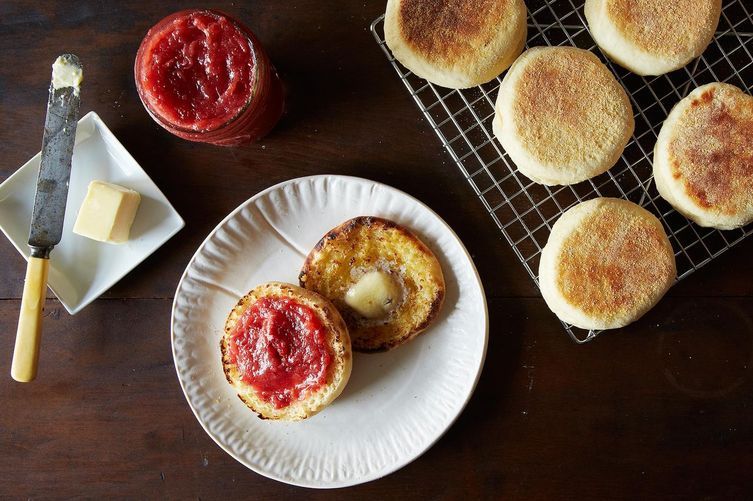
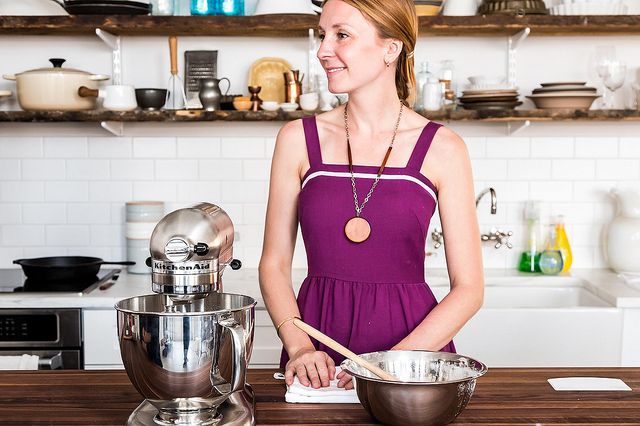
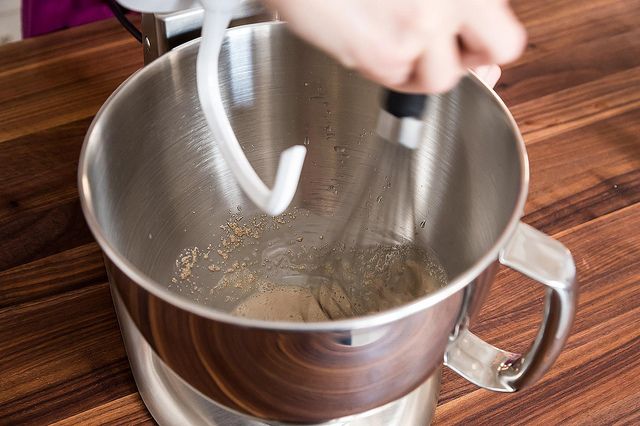
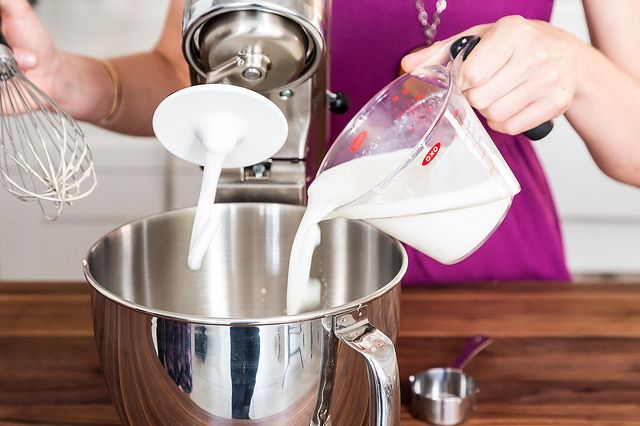
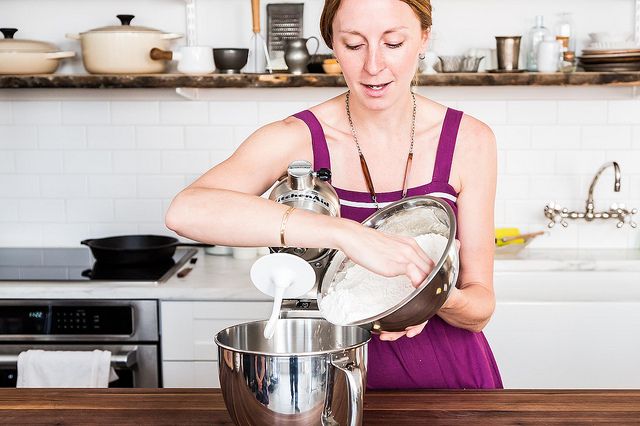


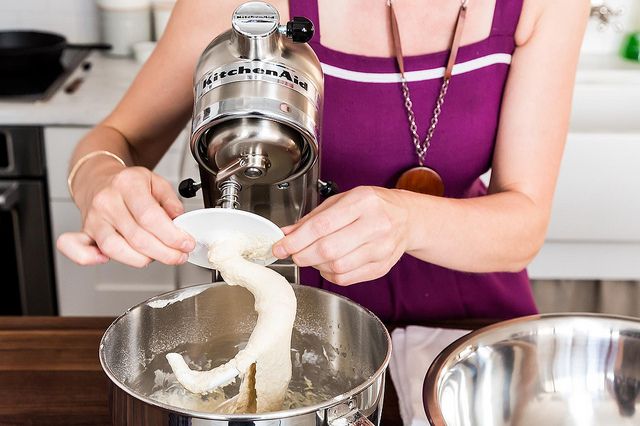
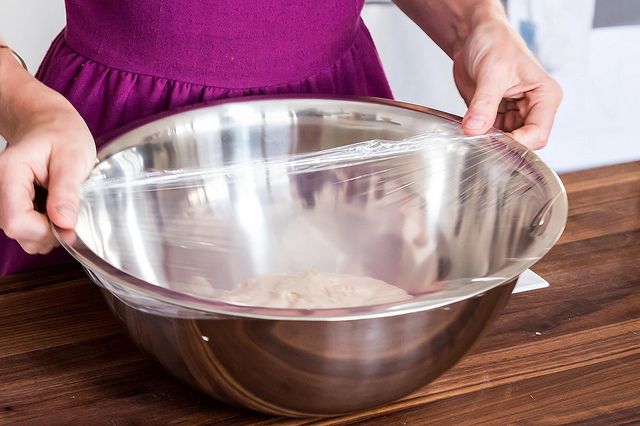
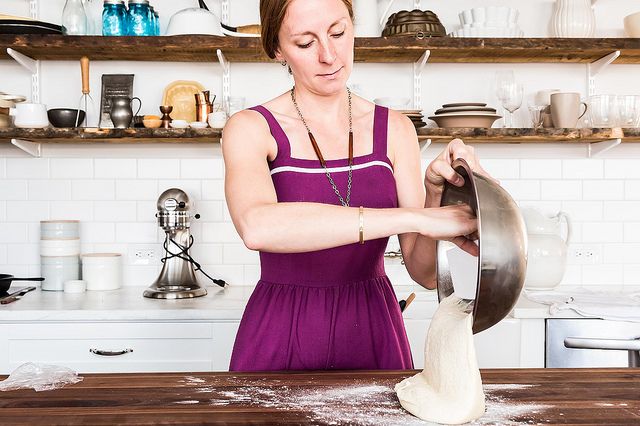
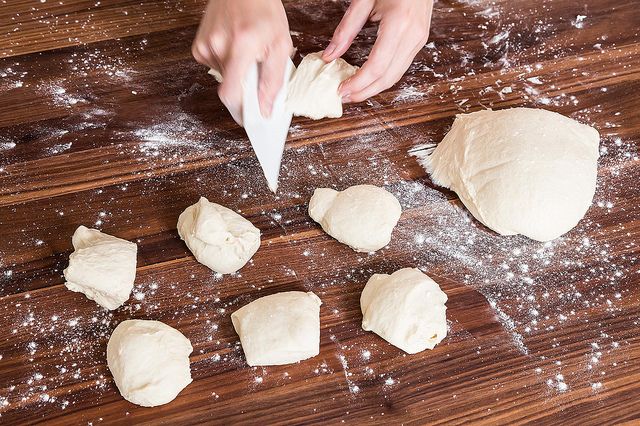
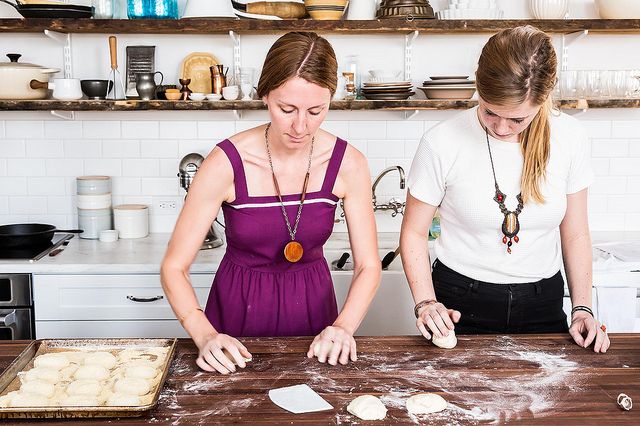
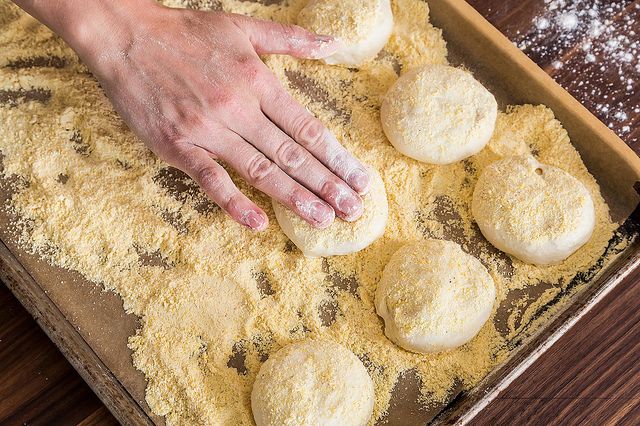
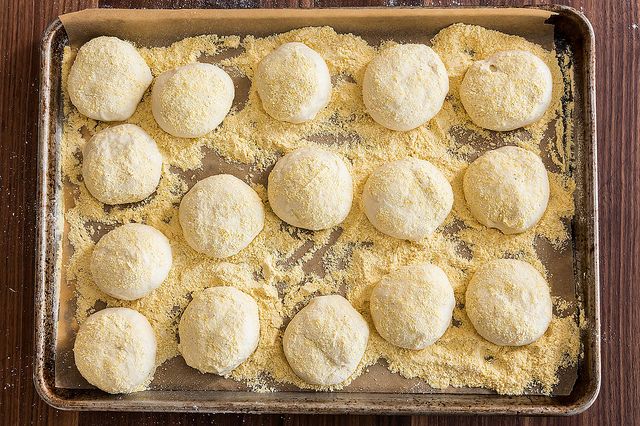
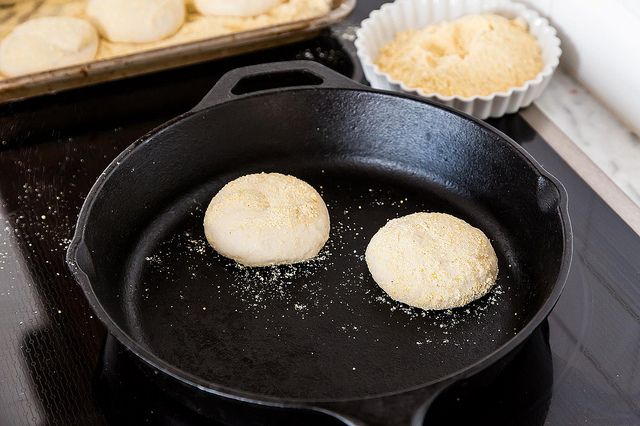
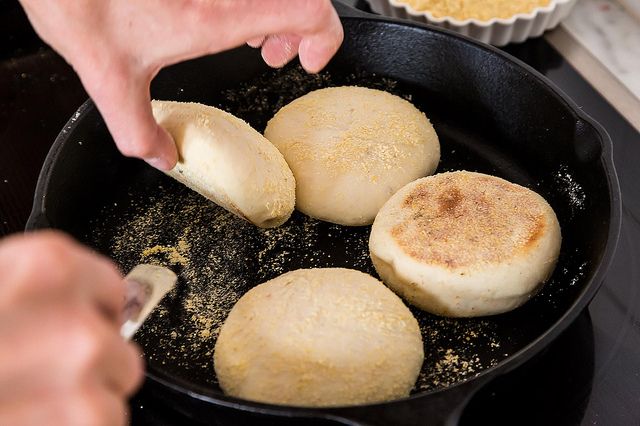
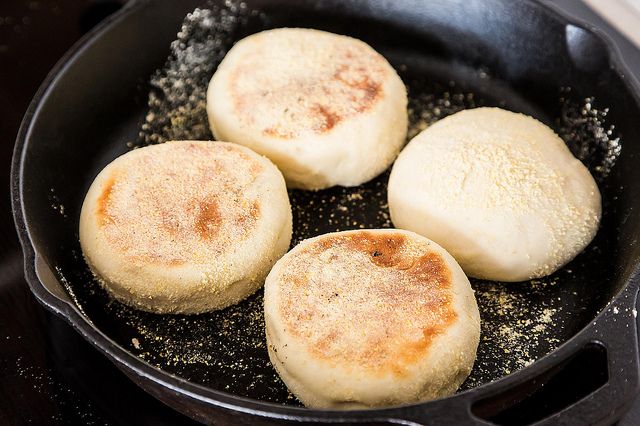
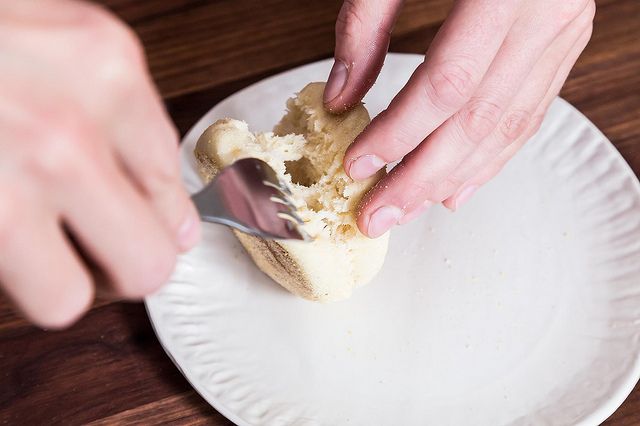
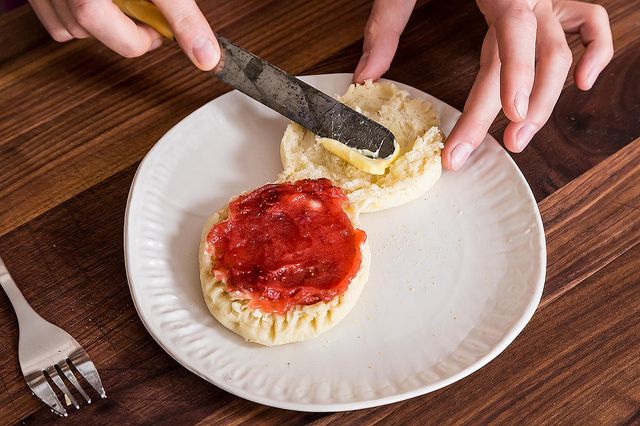

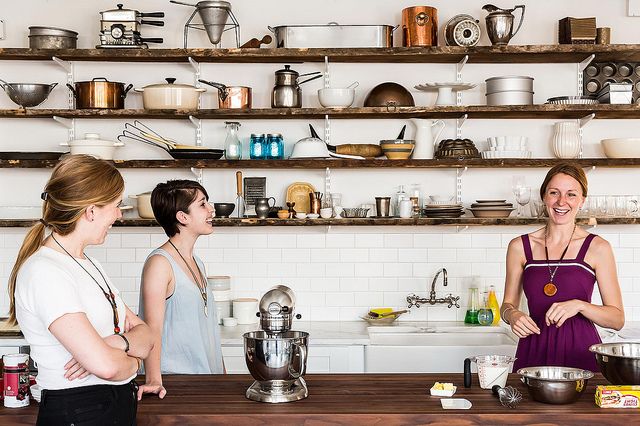

See what other Food52 readers are saying.